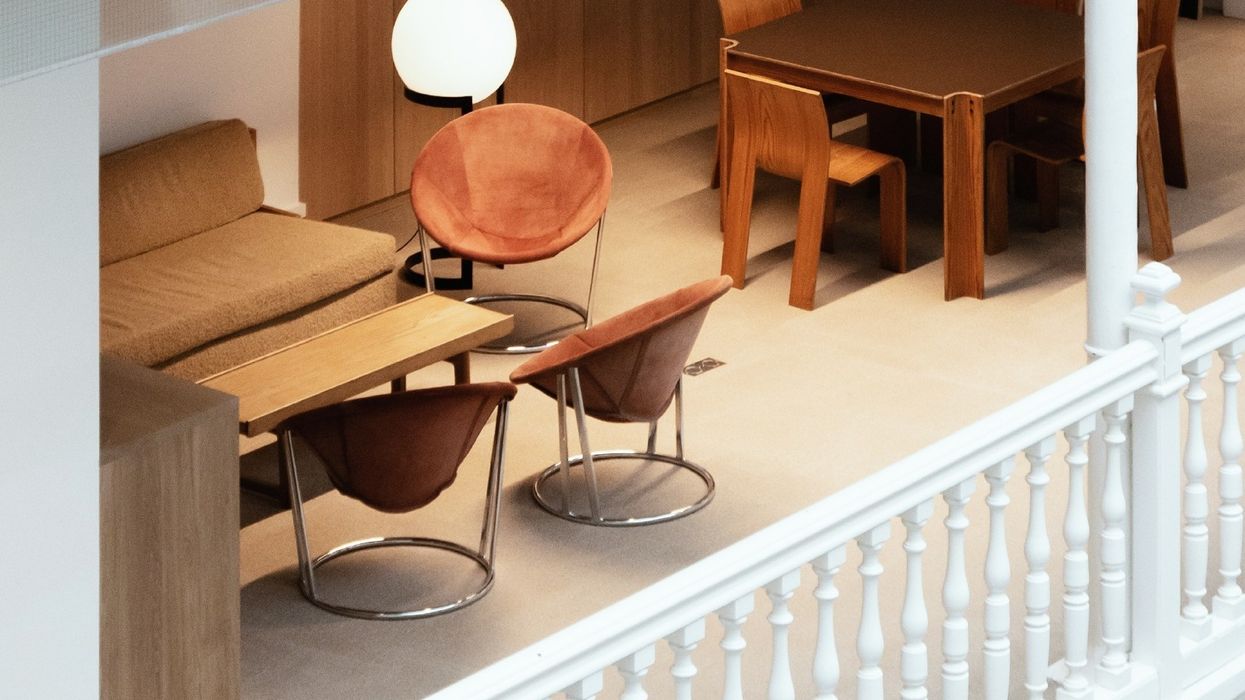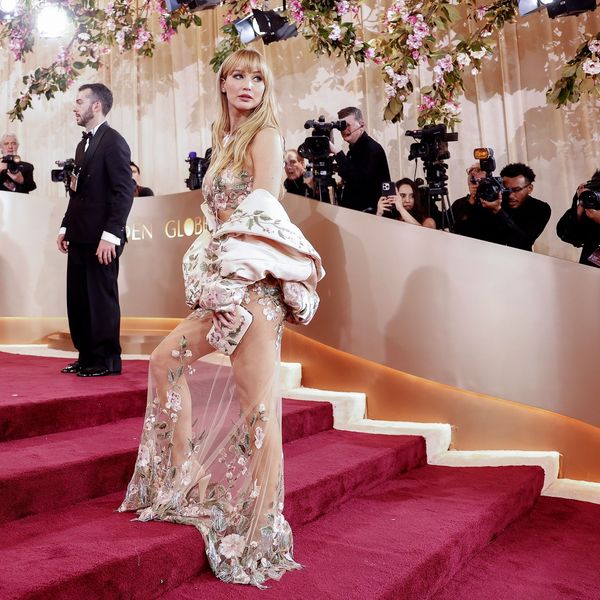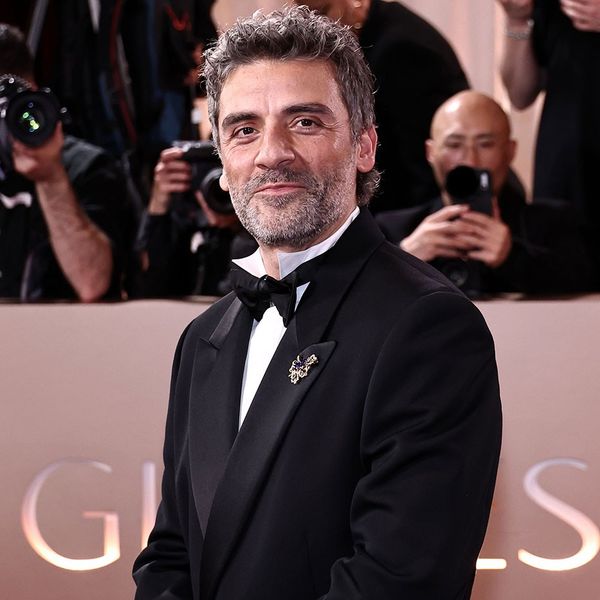Inside the Whimsically Minimal Veja Paris Offices with Co-founder Sébastien Kopp
A lesson in "ecology as common sense."

Walk into the office of Veja, the brand behind those ubiquitous V-emblazoned sustainable sneakers, and you’re struck with an apparent reverence for design. To be clear, this isn't your average efficiency-obsessed start-up fortress. Upon entry, one can’t help but notice the intricately carved century-old balustrades bordering each floor, enchanting the pared back space with a dollhouse-like feel. When it comes to design, co-founder Sébastien Kopp is a minimalist; he exalts brutalism as a superior form of architecture. So why keep these ornate details? “They were there,” he shrugs. In sharp contrast, curved staircases with solid balustrades break up the aforementioned quotidian feel. These modern structures have been in place since the ‘80s, their metal balustrades have since been blanched white. “They were there, too,” he states. “Every time we open a shop or an office, we try to keep as much as we can because for me, it's not ecology as an innovation, but ecology as common sense.”
After a nine month renovation, Veja inhabited the 4200-square-meter, 5-story space in 2022. “We always choose buildings with a lot of soul,” explains Kopp (their previous space once housed the Indian consulate). This new home’s history winds through a stint as a furniture workshop in the early 1900’s dubbed “Maxime Clair & Fils,” and later the home of the French communist party's printing building for “Les Éditions Sociales” from 1944 to 1980. When Veja took over, it was an advertising agency. Now, the space, which looks like a cross between a dollhouse, a bauhaus structure, and, sure, an office building, houses Veja’s roughly 220 employees alongside conference rooms, pictures from the fields they work with in Brazil, mid-century modern seating, and a garage-turned-vegetarian restaurant—the first attempt was vegan but the employees found the loss of cheese too great—all gathered beneath a giant skylight.
Kopp and team partnered with architects Hugo Haas Studio and Ūti Architects to (subtly) reimagine the space. They collaborated on Veja’s Montmartre store, as well. Haas, whom Kopp counts as both one of the best architects in Paris and a close friend, is also behind one of Lemaire’s Paris stores (a brand with whom Veja has previously collaborated) and the Aesop shops. “He knows how involved we want to be with the materials, and he knows we want to find ecological solutions, et cetera,” he explains. “We were maybe too involved,” he laughs. “It was a ‘collaboration.’” The goal was less about a certain look, but instead to create a space that made the employees feel at ease—Kopp’s ultimate priority whether you’re talking about conference room design, working hours, or meeting agendas.
They splashed the kitchen walls with terracotta tiles from the South of France, utilized solid oak for meeting rooms and callboxes and, of course, implemented ecological elements like recycled polyester carpet tiles. Strategy involved a delicate balance between leaving this as they came and filling the space with personality-driven accessories. Tom Dagnaas, a member of Veja's retail team, counts vintage shopping as his hobby. (I’m sure we could all relate, but Kopp swears he’s better than most professionals.) The co-founder loved the idea that vintage meant nothing was being created for the space, so he set parameters for the logistical requirements, asking that no room look the same, “then I said, ‘okay, good luck.’” The result is a great deal of sleek retro silhouettes in natural materials. Sourcing vintage furniture may come at a premium in relation to recreating layouts from the Ikea catalog, but Kopp argues that it will retain value—or maybe that’s just how he convinces his CEO to invest in really cool chairs.
This boxed parameter is where Kopp thrives. If you don’t know about Veja,they are committed to an approach that prioritizes economic justice, ecological progress, and social projects like their work with Log’ins, a professional and social inclusion company. Founded in 2005, Kopp says, “We design through the materials.” He adds,“It's the opposite way of most designers.” In the case of their first shoes, they let their specific choices in Amazonian rubber, cotton canvas and laces, and other recycled materials direct the look of the product. Aesthetics bend to accommodate function, but by no means do they break. “The most simple sneakers, like the V-10 or the Camp” (OG Veja styles) “are very hard to do perfectly, because every line, every curve is something we passed days on,” he told me sitting in a cafe in the Pigalle (Kopp loves a terrace).
In fact, their whole ethos revolves around that pragmatic approach undercut with a sly reverence for design (certainly enough to secure collaboration with fashion brands like Rick Owens, Marni, and Mansur Gavriel). A slashed ad budget is a tenet of the Veja strategy. The cost of billboards, brand ambassadors, and more gets redirected to production. So it was no surprise that Kopp noted another positive of an old building full of character: it came at a reduced price. “A lot of people are choosing efficient, modern spaces where the Wi-Fi is working great,” he laughs, “where everything is easy—plug and play.” They chose a challenge with an aesthetic payout.
Both Veja’s approach and Kopp’s personal inclinations are quite retro, in many ways. They’ve been implementing cobblers in stores and factories throughout Europe. “When we enter a place, you have to respect its history, its soul,” says Kopp. For each Veja store, they begin by essentially gutting the space—and that’s it. They leave it stripped down to the bones in what Kopps half-jokingly describes as an allusion to brutalism. The design buff’s own 16th century apartment, though less modern than the office, is full of clean lines with little furniture. Essentially you work with what you have—but those limits can open a world of possibility. When I ask why they labored so intensely over the look and feel of the new office, he redirects me to his own home. “Why do you decorate your apartment well?” Kopp laughs. “You're going to be in this cube for a lot of time.”
Want more stories like this?
Cecilie Bahnsen's Copenhagen Office Embodies Scandinavian Minimalism
Rethinking the Sneaker, Sustainably
A Parisian-Feeling Interior Design Studio in the Heart of Los Angeles




